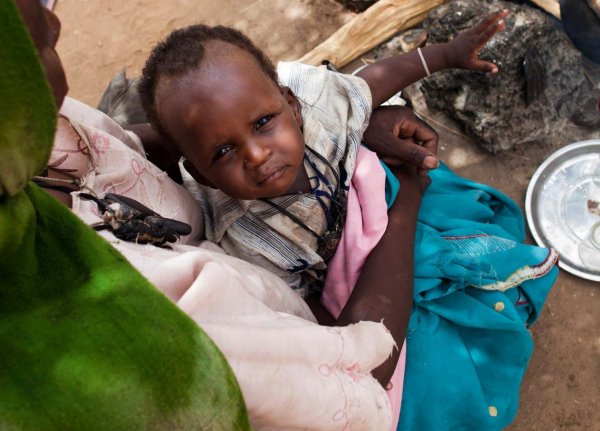Malaria and malnutrition – assessing the risks for small children
A WWARN Study Group recently published a large systematic literature review to understand whether undernutrition places children at higher, lower, or no differential risk for malaria. The goal was to evaluate evidence to help optimise antimalarial treatment strategies and support global health practitioners to improve the quality of life for our most vulnerable patients.

Malnutrition and malaria often coexist in impoverished communities, yet we know very little about the link between malnutrition in small children and severity and outcomes of malaria, particularly across sub-Saharan Africa where the greatest numbers of children die of both.
It is widely recognised that patients suffering from malnutrition, HIV or TB co-infections, and pregnant women are often excluded from antimalarial drug efficacy trials. This review confirmed that there is very limited published data on the relationship between malnutrition and therapeutic responses to antimalarial drugs. This information dearth is particularly evident with respect to artemisinin combination therapies (ACTs), and their pharmacokinetic properties in malnourished children. Closing that gap is a key component in both malaria control and elimination.
The evidence synthesis
The results of this review provide further observational support that chronic malnutrition is relatively consistently associated with high-density parasitaemia and anaemia, both associated with severe malaria. Moreover, severe acute malnutrition is believed to be linked to intestinal malabsorption of medicines which can cause sub-optimal drug exposure and contribute further to poor patient outcomes and accelerated selection of antimalarial drug resistance.
Large heterogeneity among studies
The data sets differed significantly with respect to definitions of malaria, characteristics of the study population, measurement of nutritional status, and end points measured. As a result, consistent association (or lack of) between the risk of malaria infection and childhood undernutrition and the temporal relationship between malnutrition and the risk of malaria are difficult to assess from aggregated information extracted from the literature.
What should we consider next?
Worldwide populations that suffer undernutrition and high risk of malaria overlap extensively, and may represent an increasing proportion of malaria patients. However, resolution of the conflicting trends will require standardised protocols to assess the clinical relationship between malaria and malnutrition. Furthermore, in-depth analysis of the pharmacodynamic and pharmacokinetic properties of ACTs in malnourished paediatric populations will be required to optimise antimalarial dosing in this critically vulnerable group.
Assuring antimalarial efficacy and safety among malnourished populations can minimise selection of parasite resistance in overlapping regions, a growing concern in Southeast Asia, and potential threat for malaria control in sub-Saharan Africa.
We need to focus our research efforts on understanding whether ACT dosing strategies are optimal in undernourished children. We are now conducting an individual patient data meta-analysis to better understand the variability and heterogeneity of data and findings observed during WWARN's systematic review.
Read the results: Das D. et al. Complex interactions between malaria and malnutrition: a systematic literature review. BMC Med. 2018 Oct 29;16(1):186. doi: 10.1186/s12916-018-1177-5.
Read the Study Group background details:
Debashish Das is a malaria researcher at the WorldWide Antimalarial Resistance Network. Debashish is a medical doctor who grew up and trained in Bangladesh. He has worked in various settings in Asia and Africa and is now working with WWARN in Oxford.

